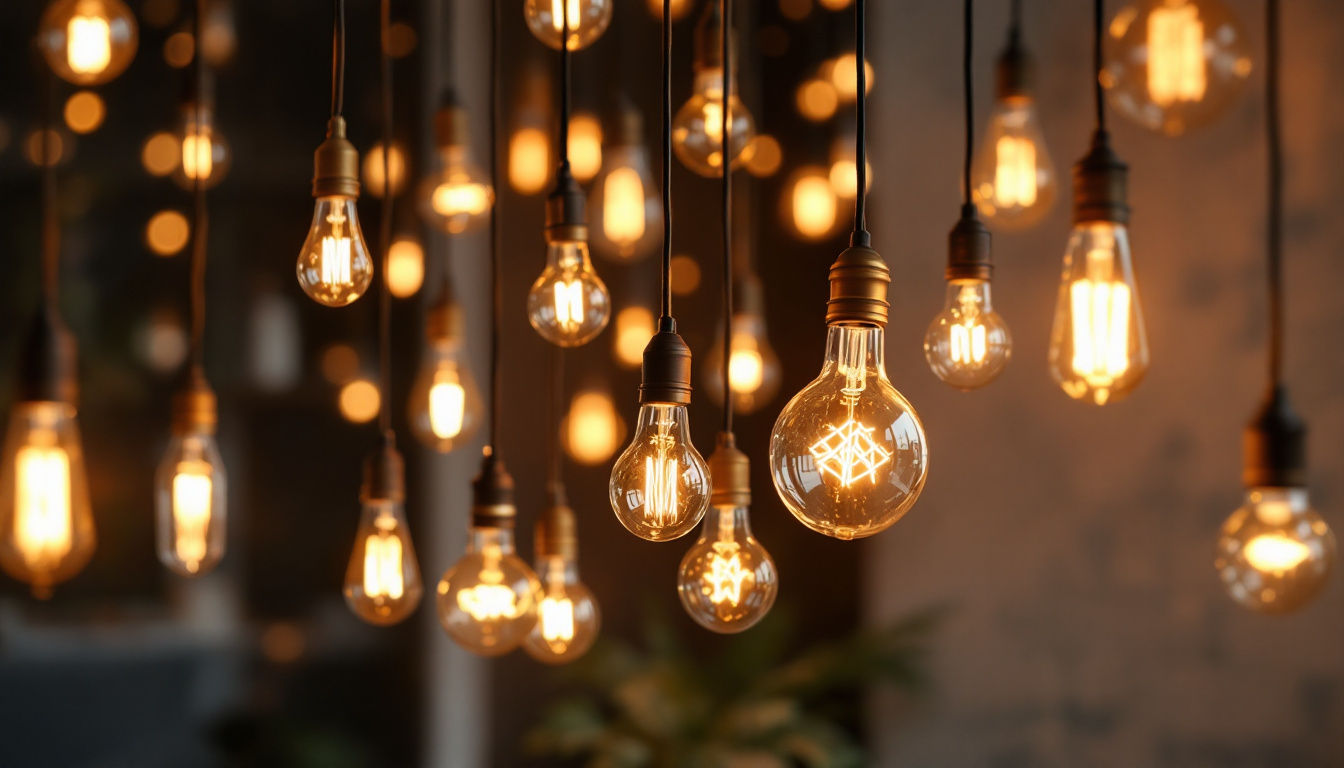
In the realm of industrial lighting, compliance with OSHA standards is not merely a regulatory requirement; it represents a competitive advantage for lighting contractors. Understanding these standards can significantly enhance the safety and efficiency of work environments, while also positioning contractors as industry leaders. This article delves into the key OSHA standards related to industrial lighting, the implications for contractors, and how adherence can serve as a unique selling proposition (USP) in a competitive market.
OSHA, the Occupational Safety and Health Administration, establishes regulations to ensure safe working conditions across various industries. For lighting contractors, understanding these standards is crucial. Compliance not only protects workers but also minimizes the risk of costly fines and legal repercussions. Moreover, it fosters a culture of safety that can enhance a contractor’s reputation in the marketplace.
Non-compliance can lead to serious consequences, including work stoppages and increased insurance premiums. Therefore, lighting contractors must stay informed about the latest OSHA regulations and ensure that their projects meet these standards. This proactive approach not only safeguards workers but also enhances the contractor’s credibility and reliability. Furthermore, a commitment to compliance can lead to improved employee morale, as workers feel more secure in their environment when safety measures are prioritized. This can result in lower turnover rates and a more engaged workforce, ultimately benefiting the contractor’s bottom line.
Several OSHA standards directly pertain to industrial lighting. These include regulations on illumination levels, maintenance of lighting systems, and the use of appropriate fixtures in hazardous environments. Understanding these standards is essential for contractors aiming to provide safe and compliant lighting solutions.
For instance, OSHA mandates specific illumination levels for different work environments. This includes guidelines for general work areas, as well as specialized areas such as warehouses and manufacturing floors. By adhering to these standards, contractors can ensure that their lighting solutions not only comply with regulations but also enhance productivity and safety. Additionally, the use of energy-efficient lighting options, such as LED technology, can further align with OSHA’s recommendations while also providing cost savings in energy consumption. It is essential for contractors to stay abreast of technological advancements in lighting to ensure they are offering the most effective and compliant solutions available.
Moreover, regular maintenance of lighting systems is another critical aspect of OSHA standards. Contractors must implement routine inspections and timely repairs to ensure that all lighting fixtures are functioning optimally. Dimming or flickering lights can lead to accidents and decreased productivity, emphasizing the need for diligence in maintaining lighting systems. By establishing a comprehensive maintenance schedule, contractors can not only comply with OSHA requirements but also create a safer and more efficient working environment for employees.
One of the primary benefits of adhering to OSHA standards is the enhancement of safety in the workplace. Proper lighting reduces the risk of accidents, such as slips, trips, and falls, which are among the leading causes of workplace injuries. By providing adequate illumination, contractors can help create a safer environment for workers, ultimately leading to higher productivity levels.
Moreover, well-lit workspaces can improve employee morale and job satisfaction. Workers are more likely to feel secure and focused in environments where visibility is prioritized. This can lead to increased efficiency and a reduction in errors, further benefiting the overall productivity of the organization. Additionally, a safe work environment fosters a culture of accountability and responsibility among employees, encouraging them to take ownership of their tasks and collaborate more effectively. When employees feel safe, they are more inclined to share ideas and innovations, which can lead to further improvements in processes and workflows.
In a crowded market, lighting contractors must find ways to differentiate themselves from competitors. By prioritizing OSHA compliance, contractors can position themselves as leaders in safety and quality. This commitment to adhering to regulations can be a powerful marketing tool, attracting clients who value safety and reliability in their contractors.
Furthermore, contractors who emphasize compliance can build long-term relationships with clients. Organizations are more likely to return to contractors who prioritize safety and demonstrate a thorough understanding of industry standards. This can result in repeat business and referrals, further enhancing the contractor’s market position. In addition, showcasing a strong safety record can open doors to new opportunities, such as government contracts or partnerships with larger firms that require stringent safety protocols. By highlighting their commitment to OSHA standards, contractors not only enhance their reputation but also position themselves as trustworthy partners in any project, ultimately leading to greater business stability and growth.
To effectively implement OSHA standards, lighting contractors should begin with thorough assessments of the work environment. This involves evaluating existing lighting conditions and identifying areas that require improvement. By conducting these assessments, contractors can develop tailored lighting solutions that not only meet but exceed OSHA requirements.
During the assessment, contractors should consider factors such as the type of work being performed, the layout of the workspace, and the specific tasks that employees will be undertaking. This comprehensive approach ensures that the proposed lighting solutions are appropriate for the environment and compliant with OSHA regulations. Additionally, it is crucial to involve employees in this process, as they can provide valuable insights into how current lighting conditions affect their work. Engaging with the workforce can lead to a more informed assessment and foster a culture of safety and collaboration.
Once assessments are complete, the next step is selecting appropriate lighting solutions. Contractors should focus on high-quality fixtures that provide adequate illumination while also being energy-efficient. LED lighting, for example, is often recommended due to its long lifespan and low energy consumption.
In addition to energy efficiency, contractors should consider the specific needs of the workspace. For instance, areas that require high visibility, such as assembly lines, may benefit from bright, focused lighting, while softer lighting may be more appropriate for break areas. By tailoring lighting solutions to the unique needs of each environment, contractors can enhance safety and productivity while ensuring compliance with OSHA standards. Furthermore, incorporating smart lighting technologies can offer additional benefits, such as automatic dimming or brightness adjustments based on occupancy or time of day. This not only optimizes energy use but also ensures that lighting levels are always conducive to the tasks at hand, thereby promoting a safer and more efficient work environment.
In an ever-evolving industry, staying informed about OSHA regulations is essential for lighting contractors. Regular training and education can help contractors keep up with changes in standards and best practices. This knowledge not only enhances compliance but also empowers contractors to provide informed recommendations to clients.
Many industry organizations and associations offer training programs and resources focused on OSHA compliance. By participating in these programs, contractors can gain valuable insights and stay ahead of the curve in terms of industry standards. This commitment to ongoing education can further enhance a contractor’s reputation as a knowledgeable and reliable partner in lighting solutions.
In addition to staying informed about regulations, lighting contractors should also implement safety training programs for their workers. Educating employees on the importance of OSHA standards and safe practices can significantly reduce the risk of accidents and injuries on the job site.
Safety training should cover topics such as proper handling of lighting fixtures, the importance of maintaining adequate illumination levels, and the identification of potential hazards. By fostering a culture of safety among workers, contractors can ensure that everyone is equipped to contribute to a safe working environment.
For lighting contractors, marketing OSHA compliance can serve as a powerful value proposition. By emphasizing a commitment to safety and adherence to regulations, contractors can attract clients who prioritize these values. This approach not only enhances credibility but also positions the contractor as a trusted partner in lighting solutions.
Contractors can showcase their commitment to OSHA compliance through various marketing channels, including websites, social media, and promotional materials. Highlighting successful projects that demonstrate adherence to standards can further reinforce this message and build trust with potential clients.
Effective marketing of OSHA compliance can lead to stronger client relationships. Clients are more likely to engage with contractors who prioritize safety and demonstrate a thorough understanding of industry standards. By fostering open communication about compliance efforts, contractors can build rapport with clients and establish themselves as reliable partners.
Moreover, contractors who consistently deliver safe and compliant lighting solutions are more likely to receive positive referrals and repeat business. This can create a cycle of success, where satisfied clients become advocates for the contractor’s services, further enhancing their market position.
In summary, understanding and adhering to OSHA standards is not just a regulatory obligation for lighting contractors; it is a strategic advantage that can set them apart in a competitive landscape. By prioritizing safety, conducting thorough assessments, and implementing appropriate lighting solutions, contractors can enhance workplace safety and productivity while building a strong reputation in the industry.
Moreover, ongoing education and effective marketing of OSHA compliance can further solidify a contractor’s position as a leader in the field. By embracing these practices, lighting contractors can not only meet regulatory requirements but also create a sustainable path to success in the ever-evolving world of industrial lighting.
Ready to elevate your lighting projects while ensuring OSHA compliance? Look no further than LumenWholesale for a vast array of top-quality, spec-grade lighting products at unbeatable wholesale prices. With our commitment to cutting out the middleman, you can trust that you’re getting superior lighting products without inflated markups. Our selection not only meets but exceeds the highest industry standards, providing you with reliable, high-performance lighting for every project. Plus, with free shipping on bulk orders, you can enjoy premium lighting at the best value — without hidden fees or compromises. Don’t miss out on the perfect blend of quality, affordability, and convenience. Wholesale Lighting at the Best Value is just a click away!

Discover the fascinating history and science behind fluorescent light bulbs.

Discover the transformative power of halide lamps in lighting installation projects.

Discover why light bulb decoration is a crucial element for lighting contractors.

Discover essential best practices for lighting contractors working with LED shoebox fixtures.